What is a Solenoid Valve?
- Device using an electromagnet to actuate a plunger which allows a valve to open or close
- Depending on the valve type, the action can either open the valve, or close the valve
- Solenoid valves can vary greatly with size, inlets and outlets, and how much power they require
- Typically designed for fluidics flow, or gas flow
How do they work?
- Rely on electricity to energize an electromagnetic coil
- When the coil is energized, it will act on the “Core” of the valve, either opening it, or closing it
- By opening or closing the valve, fluid or gas will be able to flow if it is opened, or it will stop flowing if it has been closed
- Functions much like an electrical relay
- They can be purchased in the normally open state, or normally closed state
Why do we use them?
- The relatively simple design makes them very reliable and they will last a very long time
- Also, because of the simple design, they are somewhat inexpensive to purchase
- Repair can be very easy, especially if it is related to coil issues
- They can be controlled remotely with small amounts of voltage, which makes them ideal for process control and automation
- Come in all shapes and sizes and can meet almost all applications
Transcript:
[0m:4s] Hi I'm Josh Bloom, welcome to another video in the RSP Supply education series. If you find that these videos are helpful to you, it certainly helps us out if you could give us a big thumbs up and subscribe to our channel.
[0m:16s] In today's video, we are going to talk about valves. More specifically, we are going to talk about solenoid valves.
[0m:23s] These types of valves are very common and are used in many different applications across a wide variety of industries.
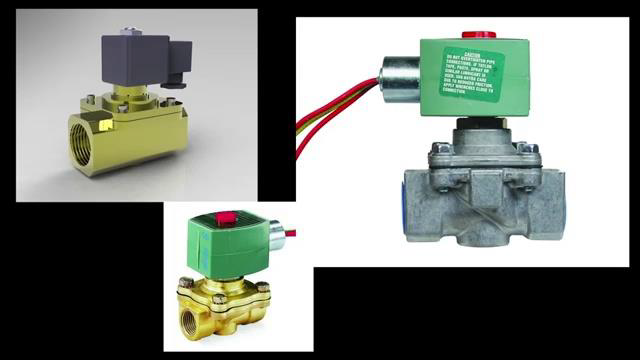
[0m:32s] In this video, we plan to discuss the many different aspects of these types of valves, including what are solenoid valves, how do they work, why do we use these types of valves, and finally, in what applications are they most commonly used?
[0m:48s] We hope that by the end of this video you have gained a solid understanding in regards to solenoid valves and in what cases they might fit a scenario in which you might encounter.
[0m:59s] First and foremost, what are solenoid valves?
[1m:3s] They are a device that use an electromagnet to actuate a portion of the valve which will allow it to change positions.
[1m:11s] Depending on how the valve is designed, this movement is intended to open or close a valve which that can then prevent or allow the flow of some kind of fluid or gas in most cases.
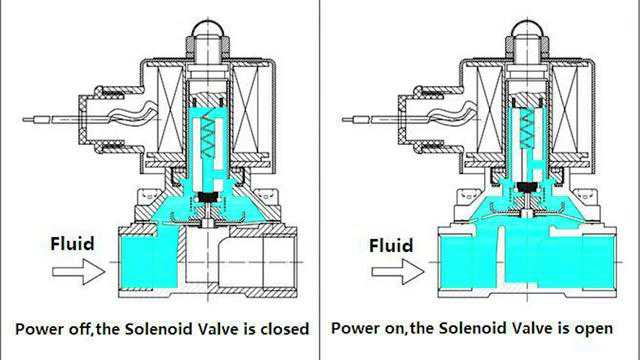
[1m:23s] These valves vary greatly in size, how much power they require, and how they operate. With the many differences they can have, in almost all cases, they are similar in a few ways. First, they all require the use of an electromagnet to energize and de-energize the mechanical movement of the valve.

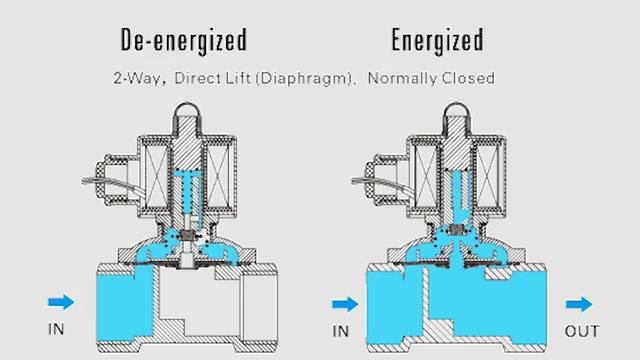
[1m:44s] Also, in almost all cases, they are designed for scenarios related to Fluidics or gas flow.
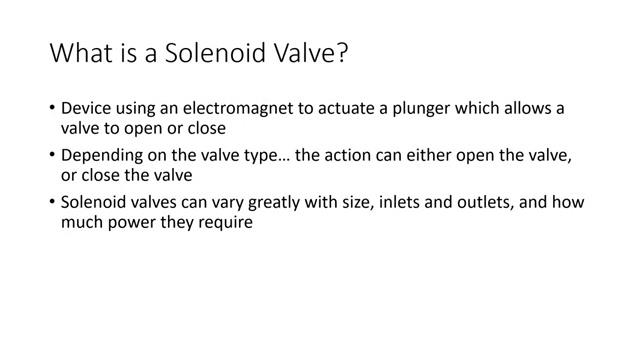
[1m:50s] Solenoid valves share many common characteristics with electromechanical relays, with the main differences being that one is designed to control the flow of electricity,
[2m:1s] and the other is largely designed to control the flow of fluid or gas. Other than that, they function in very much the same way.
[2m:9s] So how do they work?
[2m:10s] Much like with a relay, a solenoid valve relies upon the use of electrical current to flow through and energize a coil.
[2m:19s] When this coil is fully energized, it creates a magnetic field which will then act on the core, also sometimes referred to as the plunger or armature. The action of the core will require it to move in a specific direction within the device. This movement will then begin to allow the flow of fluid or gas through ports that are connected to the valve. Typically in the valve's normal state, or when the coil is not energized, the core will block the flow of fluid or gas through the ports on that valve. However, solenoid valves can be made to be normally open or normally closed depending on what is needed.
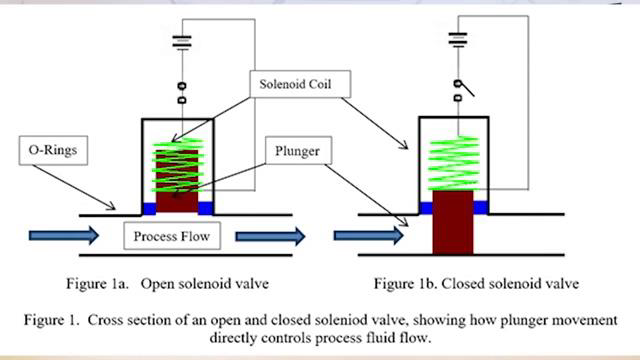
[2m:59s] As mentioned before, there are many different types of solenoid valves that can function differently from one another. But for the most part, they all function using the same principle.
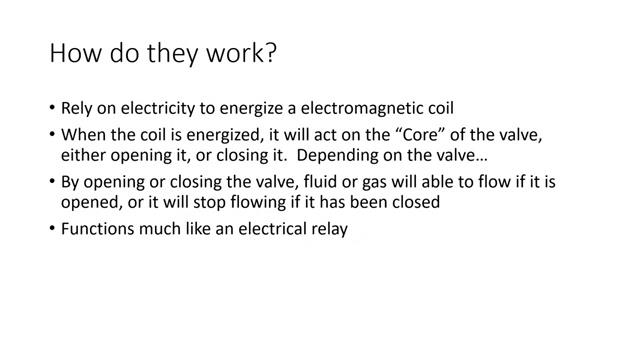
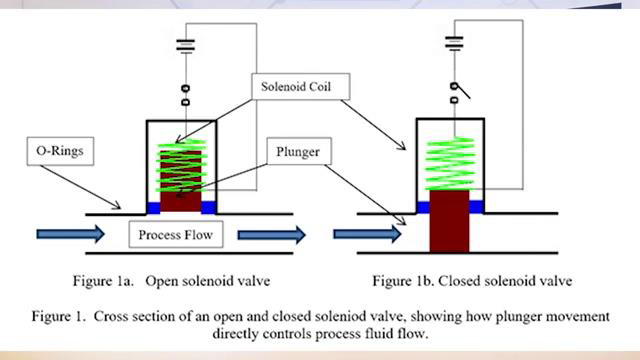
[3m:11s] So why do we use solenoid valves in so many different scenarios?
[3m:16s] There are a few main reasons for this.
[3m:18s] First is the fact that the mechanics and operation of this device are relatively simple.
[3m:23s] It is this simple operation that allows the solenoid valve to be a very reliable mechanism that can last over a long period of time. Also, because of the simplistic nature of these devices, they can be very easy to repair in many cases.
[3m:39s] For example, many solenoid valves allow for easy removal of the coil assembly, providing users the ability to swap or repair these valves fairly easily. Another reason these valves are so common is the fact that they are controlled electronically, which allows for remote operation and various other benefits regarding valve control.
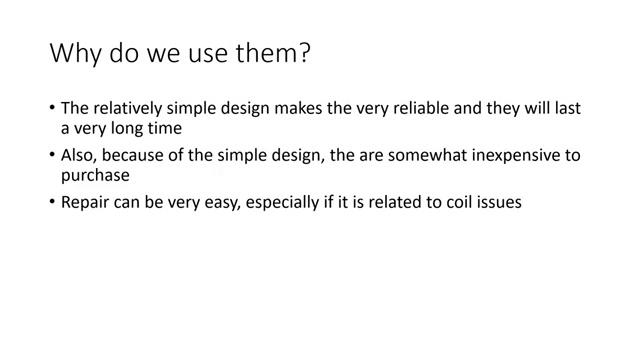
[4m:1s] Lastly, they come in all shapes, sizes, and designs that can fit almost any application. So, as you can see there's not one specific area where you find solenoid valves being used more than others.
[4m:14s] Because of their relatively low cost and reliable functionality, they can be found in almost any industry and a wide variety of use cases within those industries.
[4m:26s] So, as you can clearly see, solenoid valves are one of the most commonly used mechanical devices today and provide added functionality to many different areas in many different industries.
[4m:38s] For a full line of industrial control equipment and thousands of other products, please go to our website. For more information or other educational videos, go to RSPSupply.com, the Internet's top source for industrial hardware. Also, don't forget: like and subscribe.




